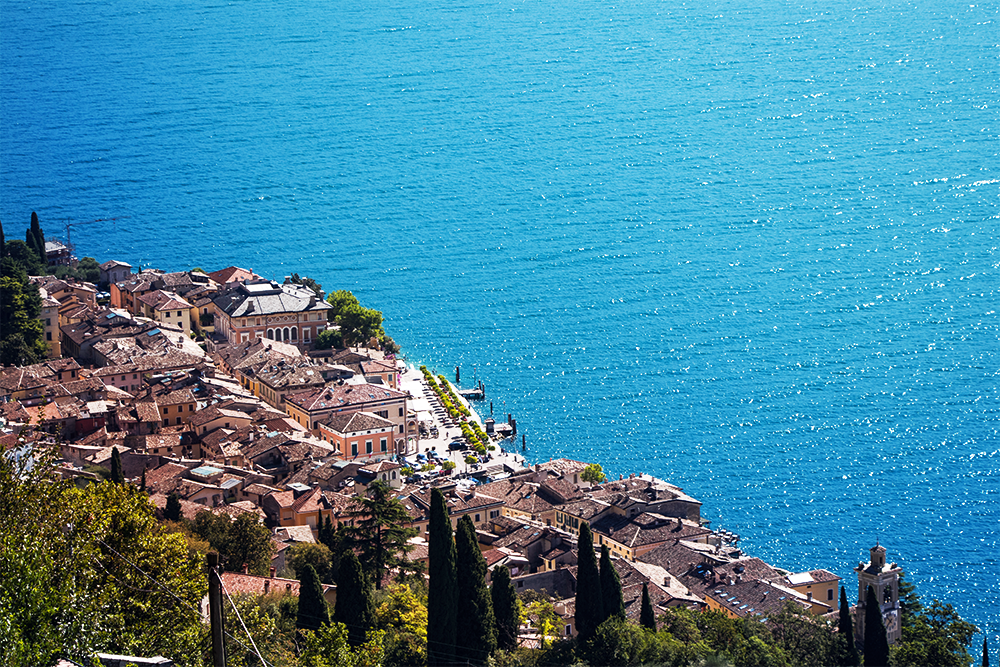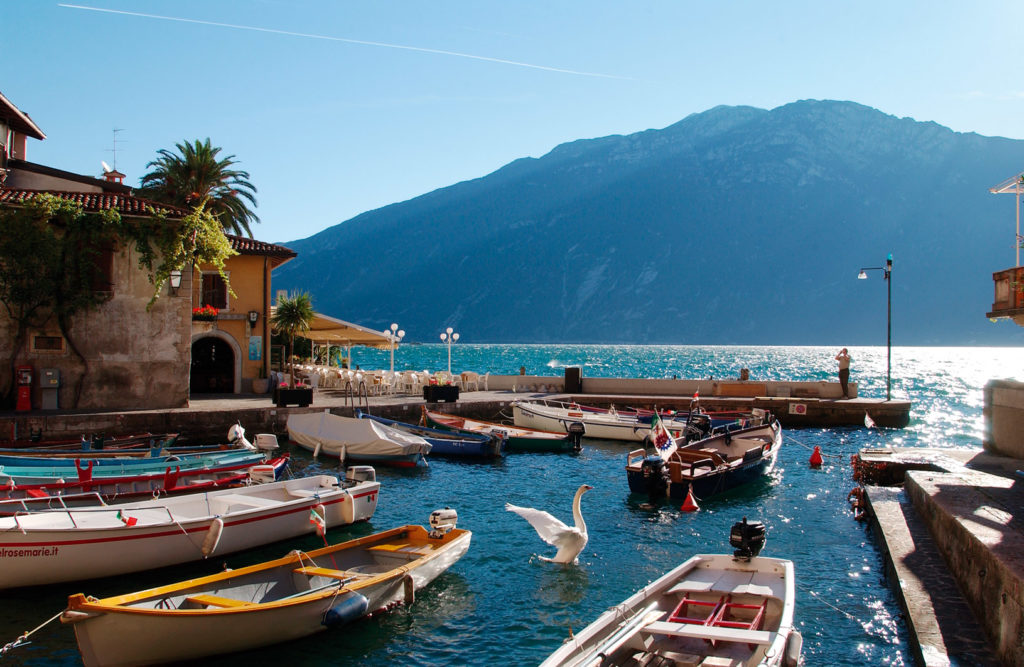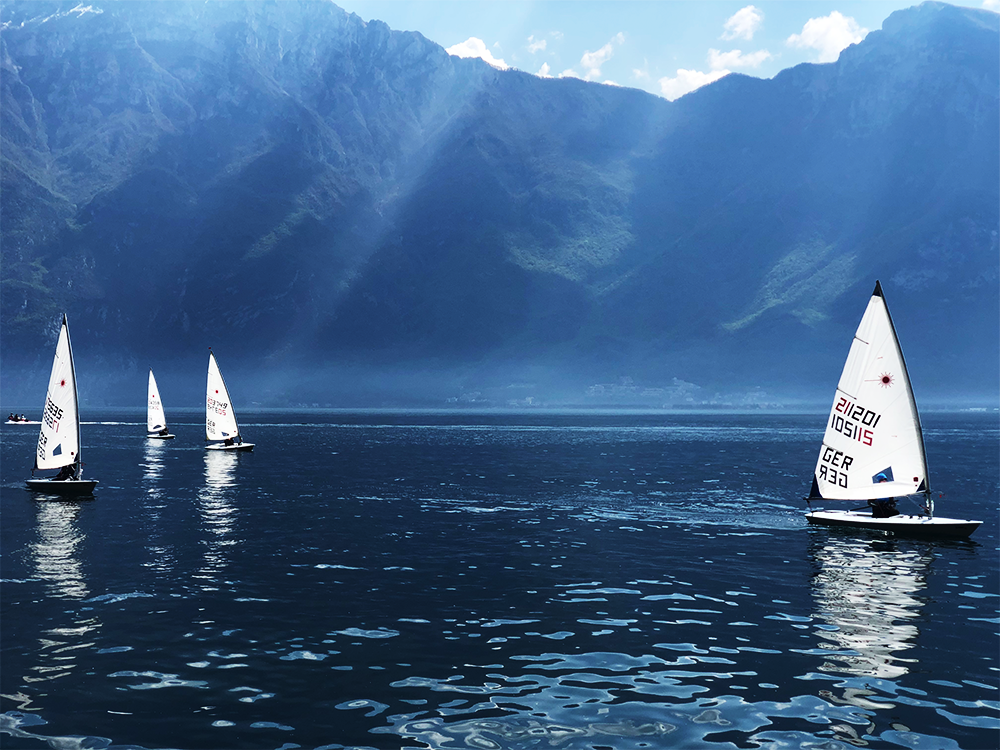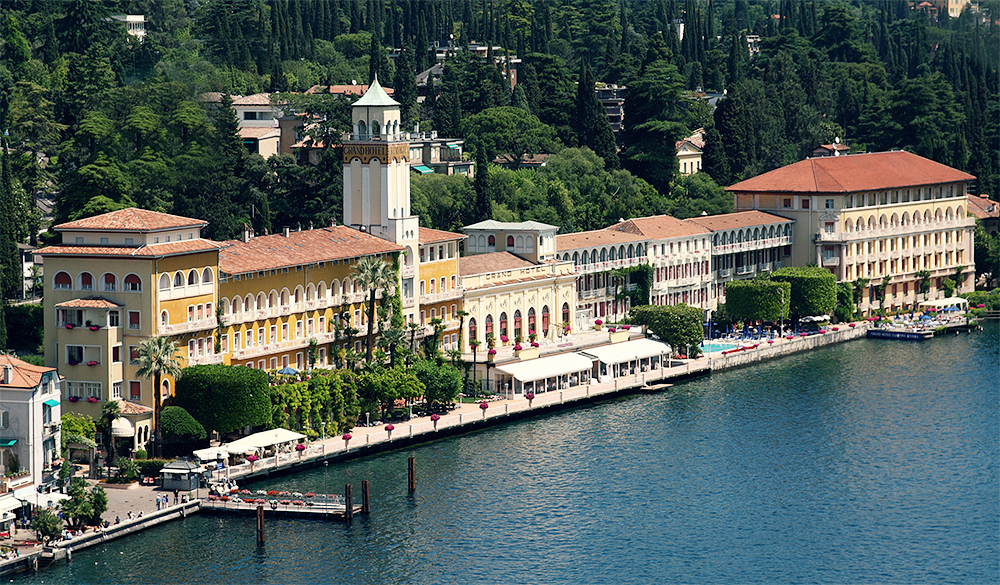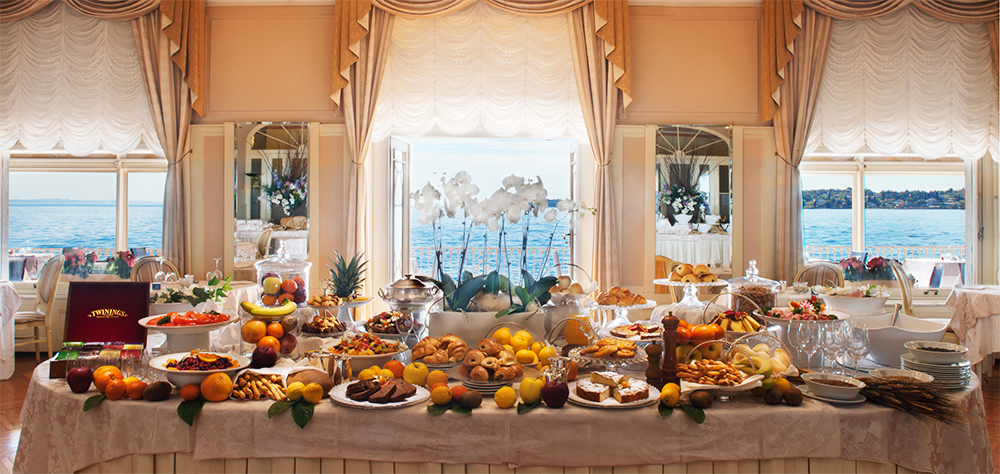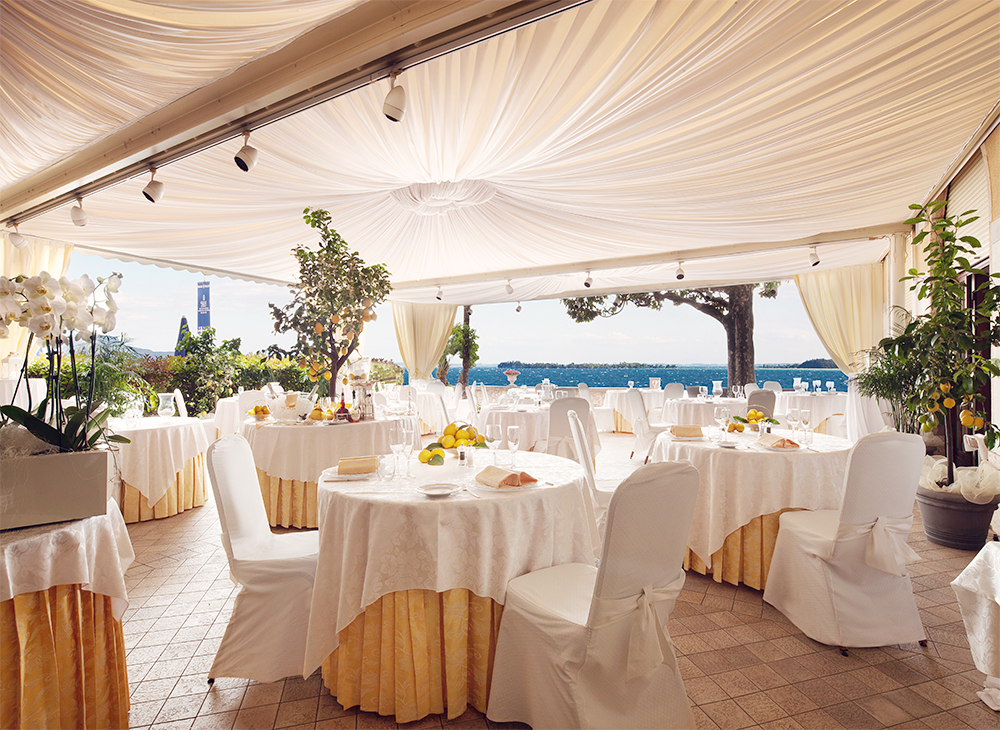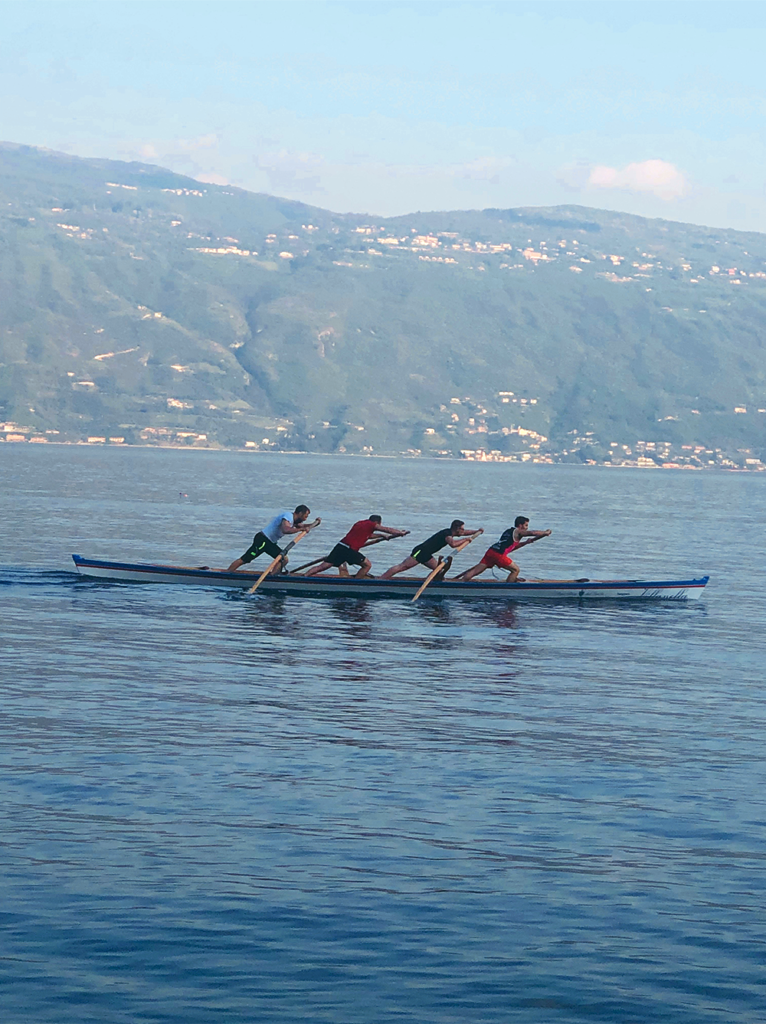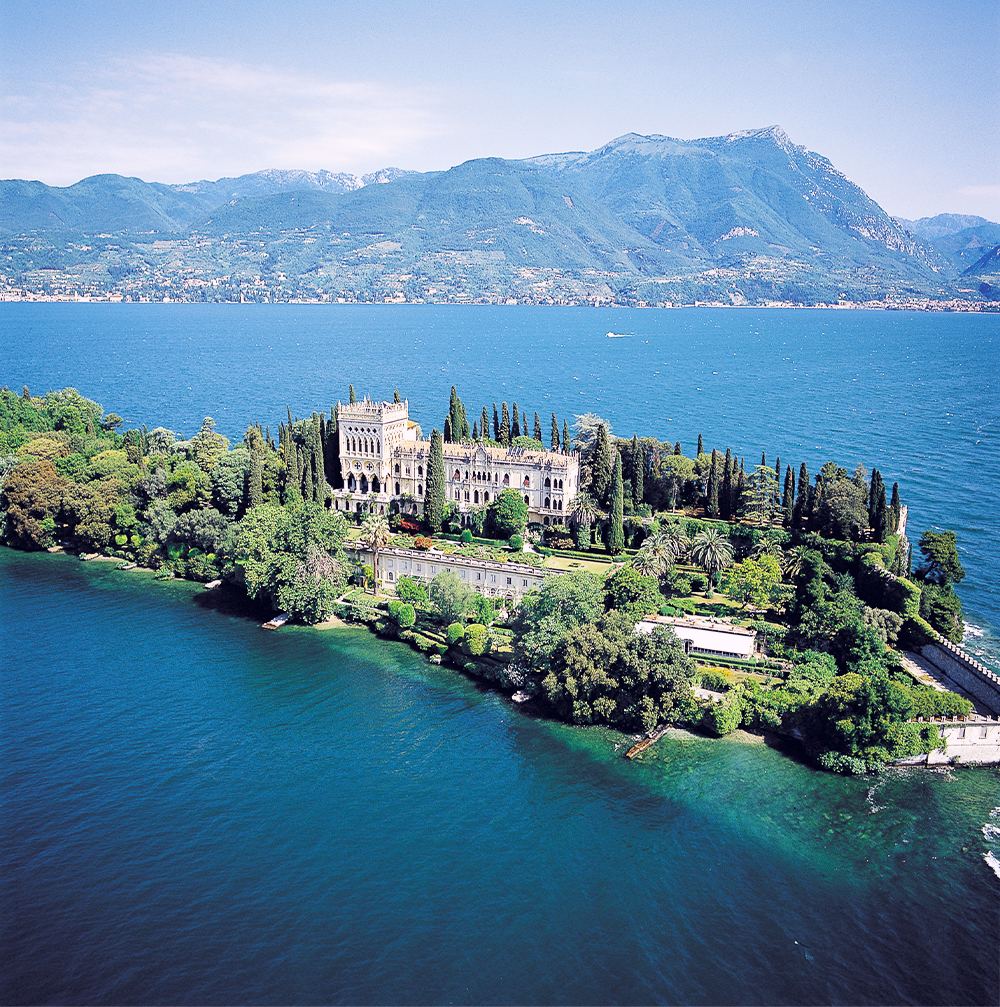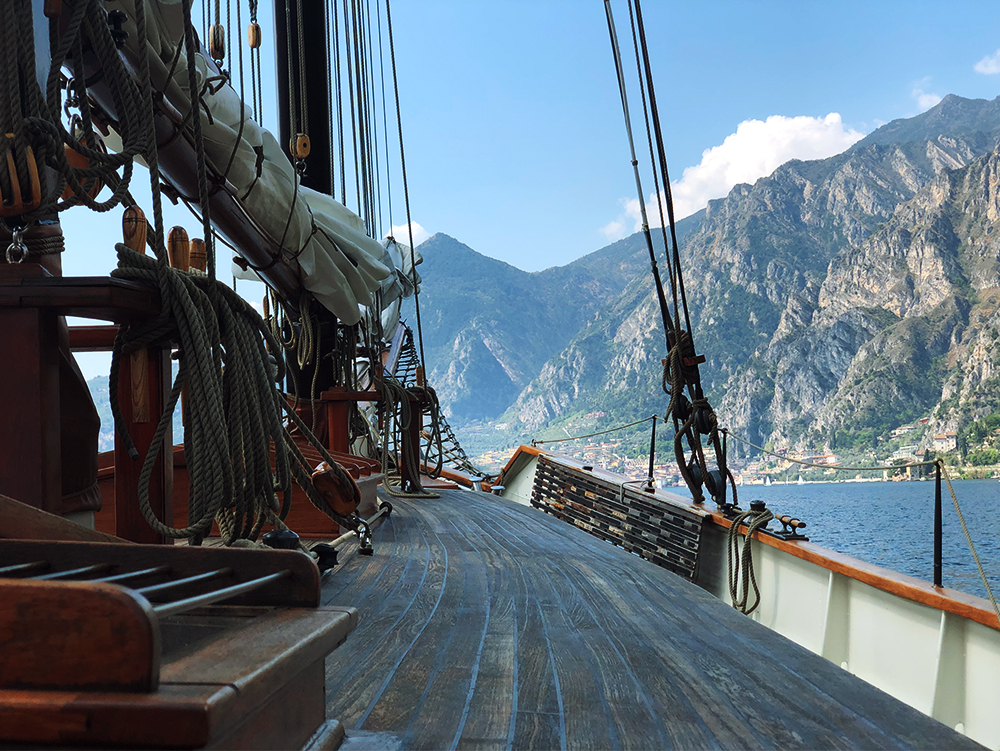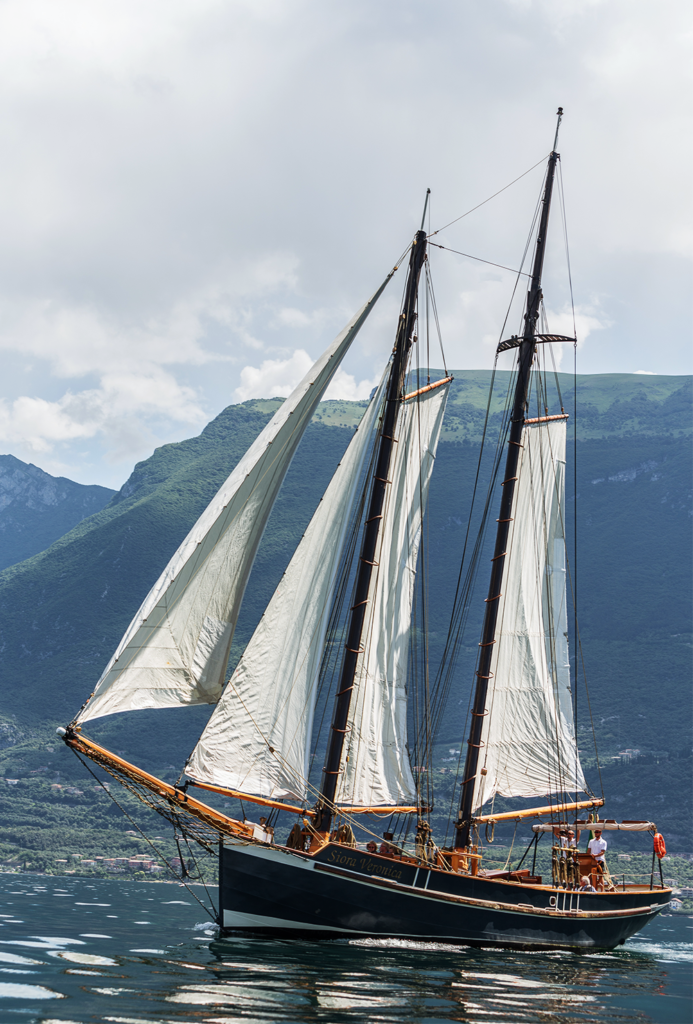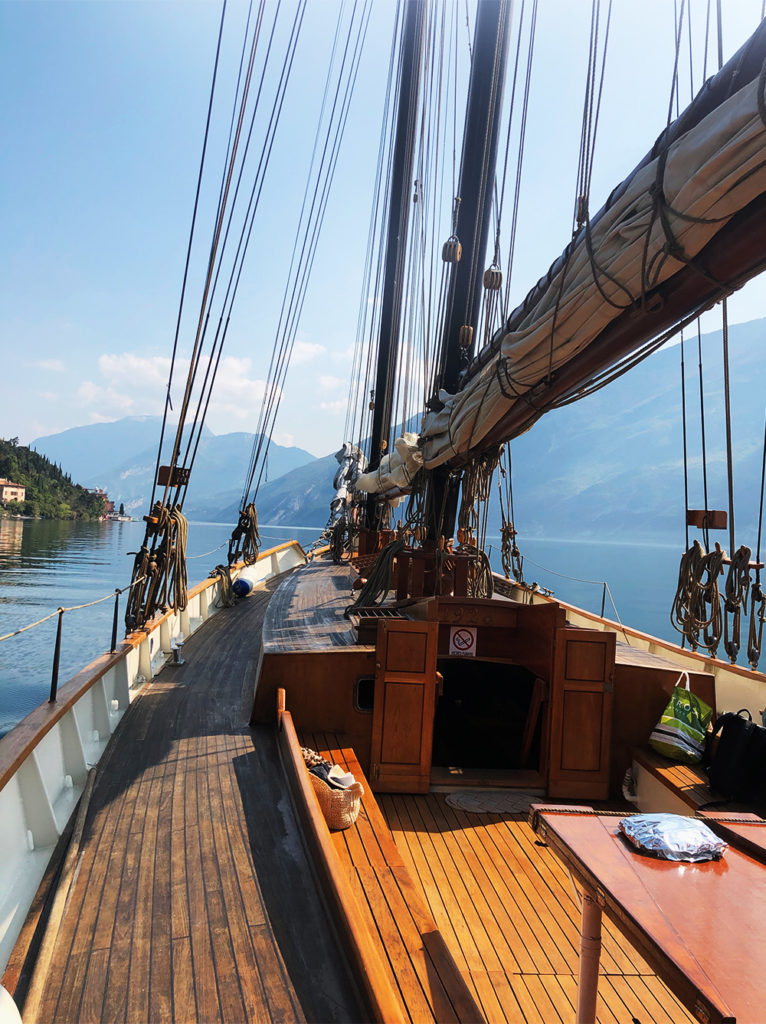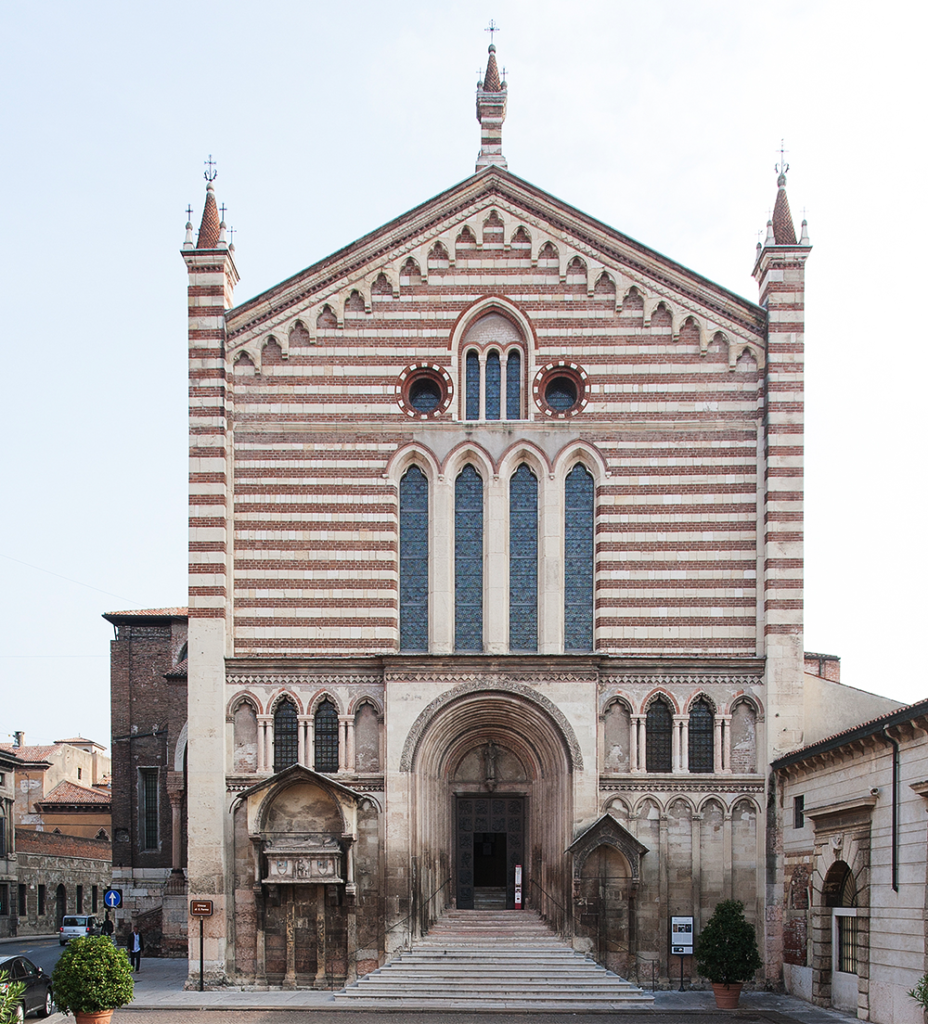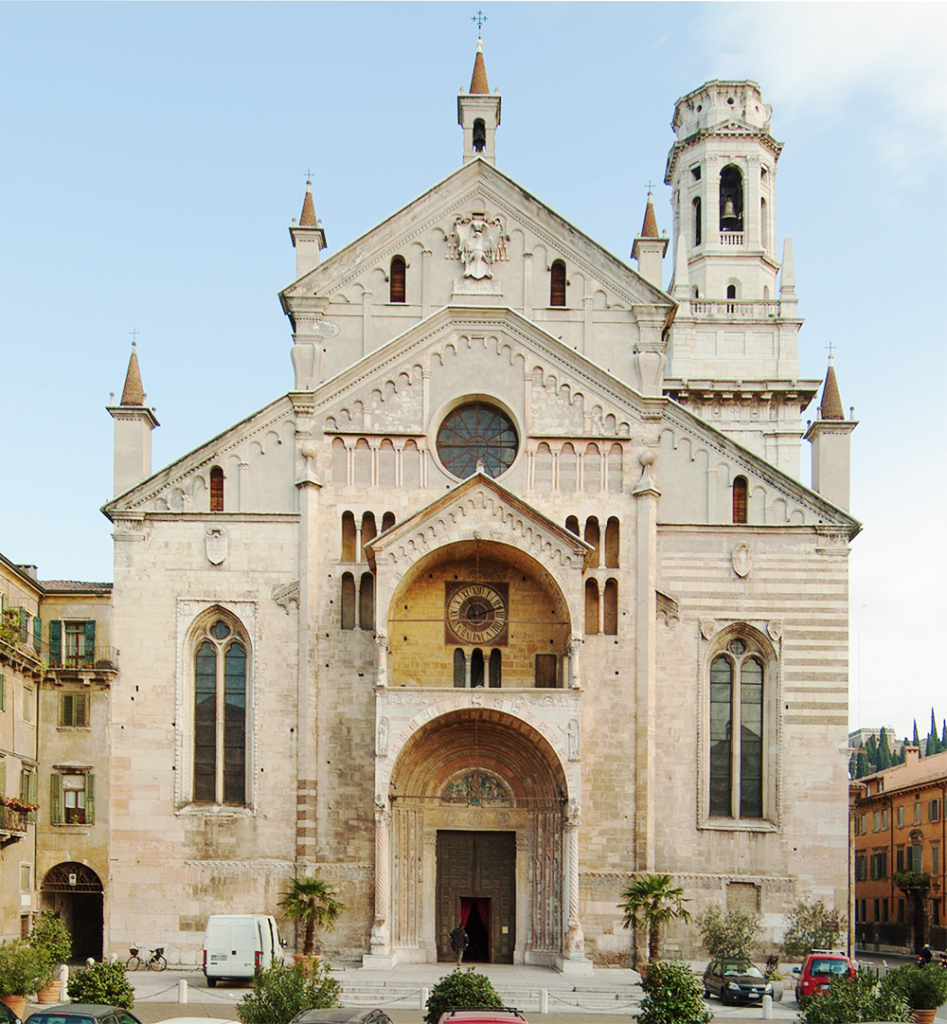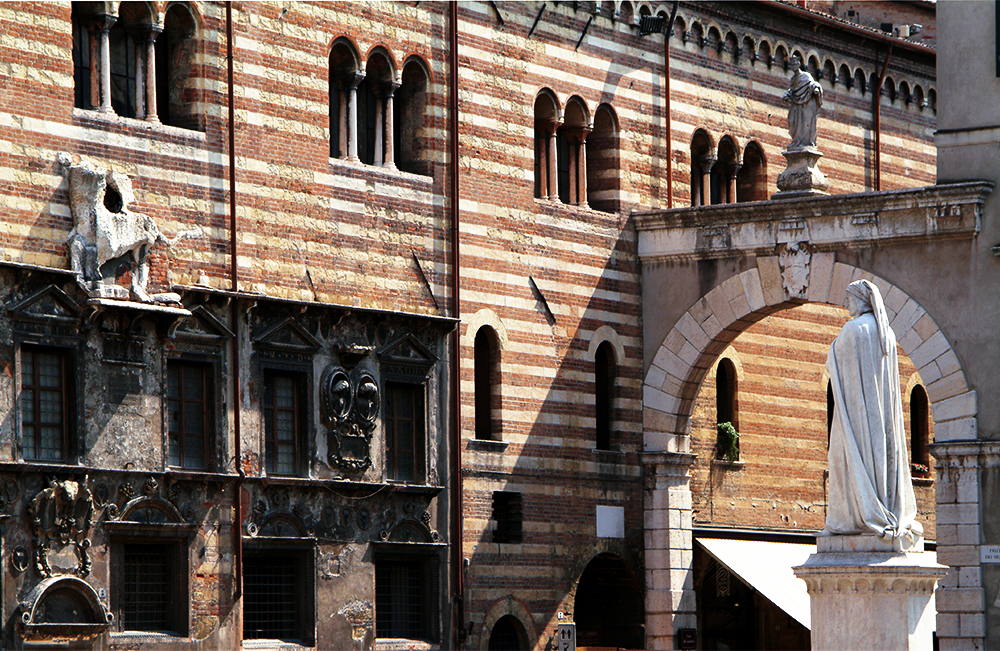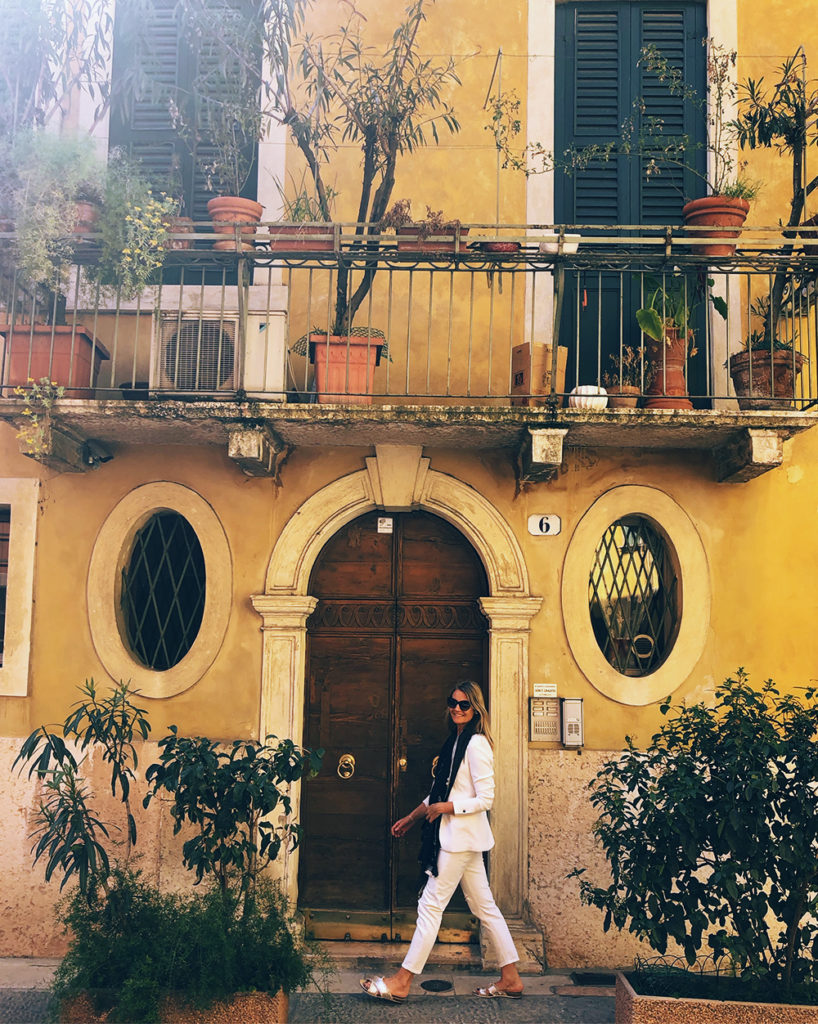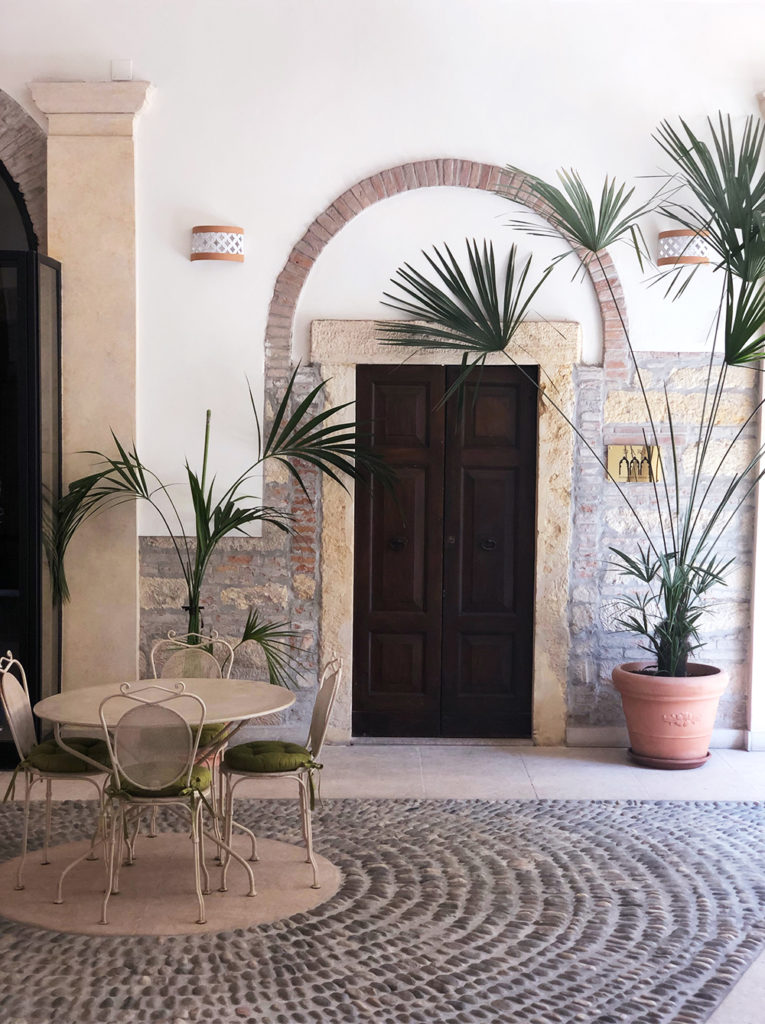“Where the Alps meet the Mediterranean” is a fair claim for Lake Garda. Its subtropical climate thrives under the sunshine and is protected from the northerly winds by the high Alpine foothills. Lemons grow here and people came historically to convalesce. The lake is 200 feet above sea level and the steep, rugged cliffs are in the north while the softer hills are southwards.
With their imagination and eye, the Italians really know how to make the most of often small, steep terrain. The lakeside towns have a pleasing similarity with long waterfront boulevards dotted with cafes, bars, churches, coloured houses and little marinas. There’s picturesque Salò, the ever-popular Sirmione peninsular, bustling Garda with its lovely ochre Palazzo del Capitano and with a perfect promenade along which to stretch the legs going as far as the neighbouring town of Bardolino. I came to Gardone Riviera and listened to the sound of bobbing boats and rippling shores and watched the range of watercraft from pleasure boats to ferries and, at night, I could see how under-populated it was from the lack of lights.
I stayed at the town’s historic Grand Hotel Gardone. The characterful tower with its “Grand Hotel” in gold mosaics is very much the symbol of the hotel and is often reproduced in old posters. It’s now a combination of six buildings that stretch forever along the waterfront with long corridors leading to a traditional and homely suite of rooms: a sitting room, reading room, dining room, a music lounge, billiard room, and a charmingly slow old-fashioned lift. The large drawing room originally was effulgent with 2400 candles as the great and the good flocked here with guests including Nabokov and Somerset Maugham and more recently Schwarzkopf and Schroder. Churchill himself stayed in room 310.
At the neighboring jetty, I enjoyed a bespoke outing from Lake Garda Boat Trips. I imagined myself house hunting as I explored two beautiful villas, whose private ownership lent a special sense to the epicenter of the lake. With the engine off, the stillness was mesmeric. Isola di Garda is utterly dreamy with its cormorants and heron colony, its pines, silvery olives, pink oleander, cypresses, and bougainvillea. It has a heavenly calm perhaps from the possibility that St. Francis himself once visited the island when it was a monastery. And, on the eastern side of the lake, sticking out on a promontory, is Punta di San Vigilio. Named after a bishop who brought Christianity here in as early as the 4th century, it is still divine. The sand-colored plaster is harmonious with its natural setting of rocks, trees, and water. Indeed with its neutrality, there’s no need to embellish the beauty. Under a vine-colored pergola, there’s a café and nearby a boutique and further along straight avenues along which to walk in silent reverence.
I disembarked to enjoy an evening walk along the promenade, where right at the end of the mini-marina, with orange trees outside was the Savoy Palace. It welcomed me from afar with its elegant pale blue and white shutters. I swished through the fronds of the palms on its ground level instead of descending the hotel’s spiral staircase to enjoy a delightful dinner.
And it was in Gargnano that I was next to stay at Villa Giulia. Once a private family summerhouse, it’s now a beautiful, large house with Gothic and “Liberty” architecture, owned by the energetic and cultured Barbara Bianchi Bombardelli. It’s clearly her personal and cherished dream. Peonies in full fragrant bloom welcomed me through the gate, along with Ciccio and Gas, Barbara’s miniature Schnauzer dogs. The gardens and terraces slope down to the lakeside. There are palm trees, nacreous olive trees, and clipped box hedges. All is pristine, measured, and exquisite. Fringed umbrellas dance in the wind. It all looks out at the majestic Monte Baldo, whose snow-capped slopes offer a dramatic contrast in temperature to the sun and wind below.
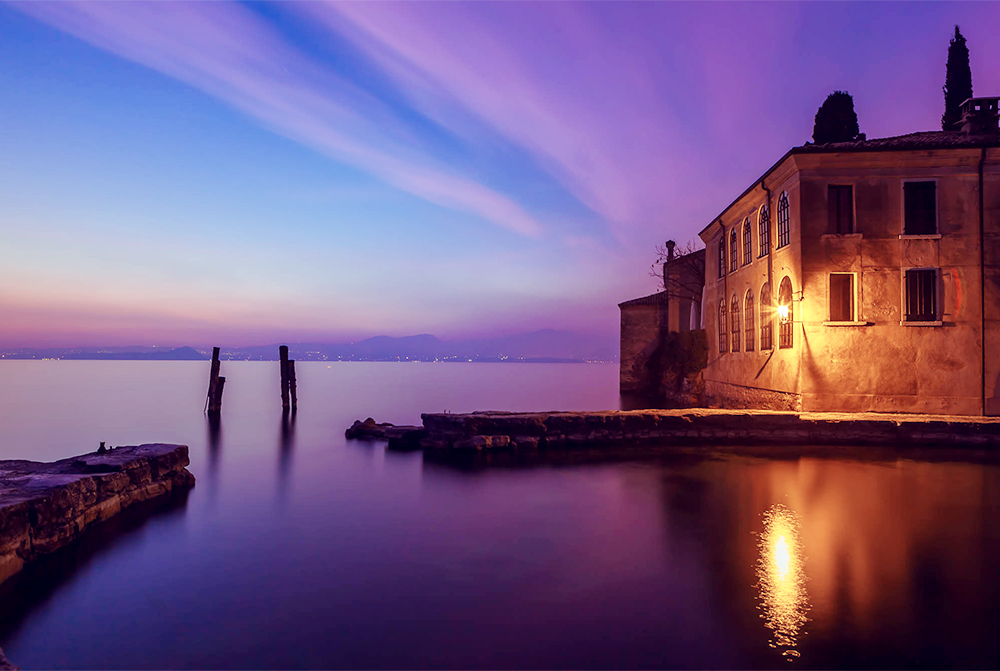
Along the shore, I walked to a hamlet called Villa where the Alps are at their clearest and where there’s a magical little marina hosting eight boats and two restaurants. Here I reached Villa Bettoni. On the lakeside terrace, I imagined what it must have been like arriving by boat to dock beside the majestic façade of the length of the building. Crossing the road by a bridge took me to the monumental garden with its terraces, fountains and even a “nymphaeum.” The villa is like a private, informal museum and booking is mandatory and, if you choose the right day, you’ll be accompanied by a member of the family.
I left the next day to go to the northern tip of the lake and after a number of impressive tunnels I came out at Limone. Her abundance of citrus trees is meant to be why the locals have the longest life expectancy. They grow an enormous species called “Cedro” lemons, which they protect in winter months with glass panels assembled on the tiers and boards that are laid across the beams.
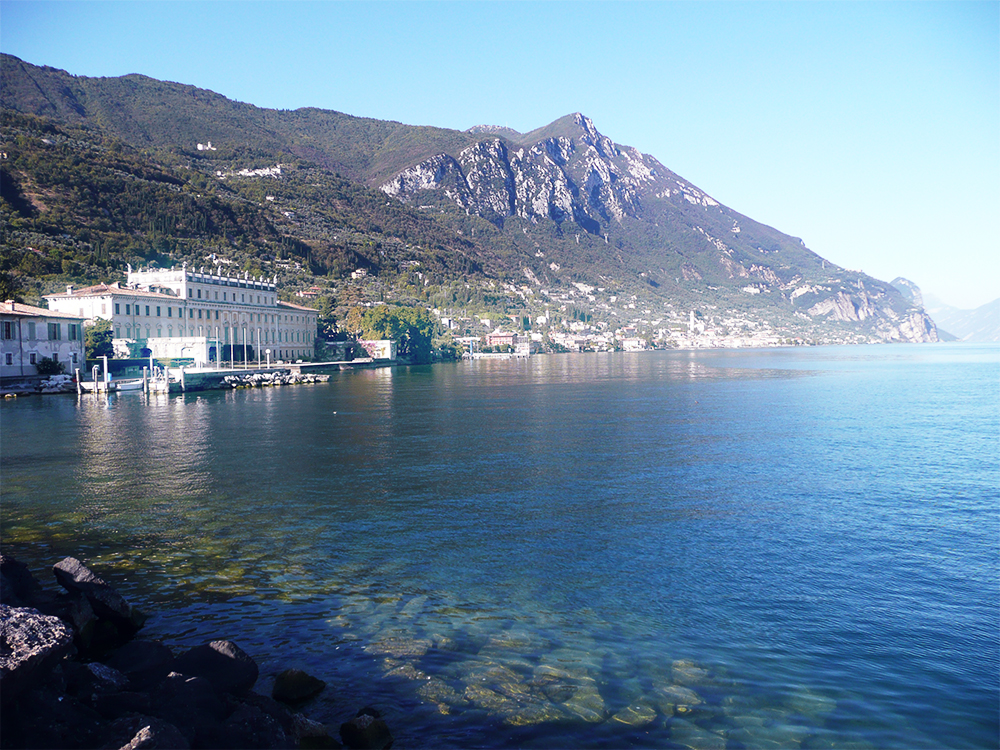
Here I boarded the wonderful yesteryear boat, Siora Veronica. I walked up and down the long teak gallery beside the beautifully maintained tackle and knots and leather apparatus as the boat effortlessly glided up to the top of the lake to Riva del Garda where a flotilla of sailing boats was out at play. I was experiencing the here and now on a grand scale in a boat that sent me back to a previous era, transported yet present, along tranquil water that was so still and sensual.
In reference to the lemons and deep blue lake with its “yellow cross on blue” flag is the city of Verona, my final destination an hour’s drive away. I knew it was going to be rather special, it is the setting for no less than two of Shakespeare’s plays.
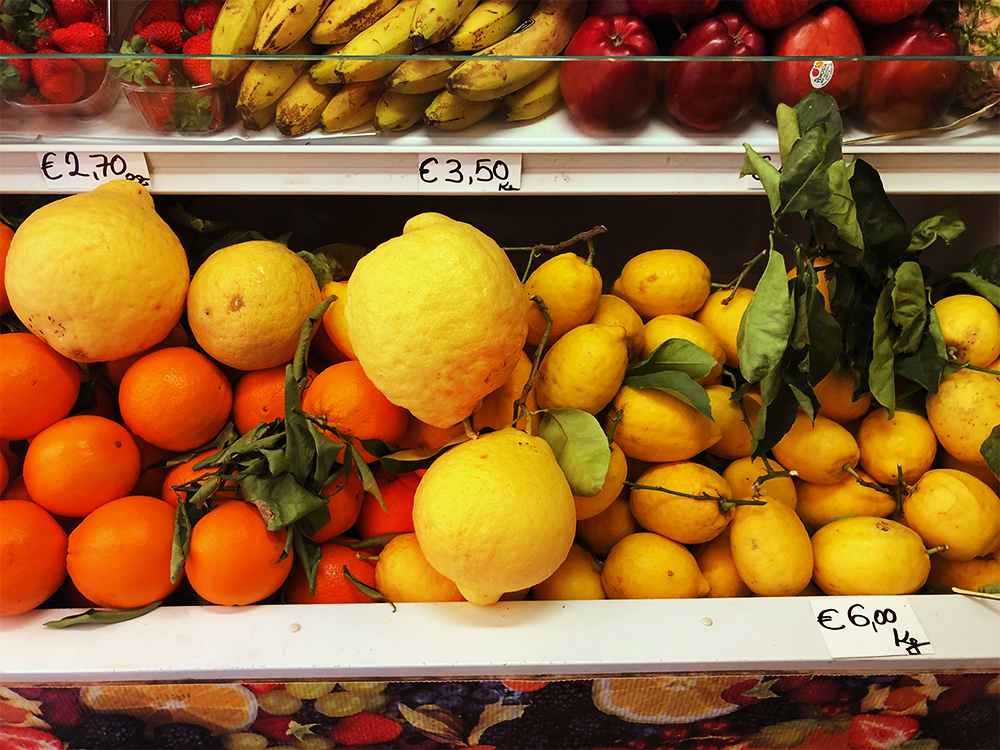
Fantastically situated, yards from the river Adige and bang opposite Sant’Anastasia, one of Verona’s larger churches and, minutes away from all the sites, was my last hotel, the delightful Hotel Due Torri. Originally a 14th-century antique inn, it has a large castle-like interior with frescoed ceilings. Its fifth-floor panoramic terrace looks down on the uniform brown-tiled rooftops of the city center and here there’s a rooftop bar.
The city center is mercifully unspoiled, not in a theme park way, just respectfully preserved with no rubbish or adverts. It is all highly walkable along its maze of streets bordered by old crenelated buildings with colorful frescoes acting as a status symbol as are the raised outdoor tombs of the great and the good believing themselves to be buried closer to heaven.
I wandered down via Filippini, part of a picturesque, quiet and unspoiled neighborhood with its colorful houses and laundry-drying balconies. It was the setting for my lunch at the charming Osteria Dogana Vecia which offers authentic meals, full solely of locals with all the cooking and serving done by its two owners. I marveled at how the Italians make such delicious meals out of sometimes the most basic ingredients as I savored the peas in my ‘pappardelle coi bisi’.
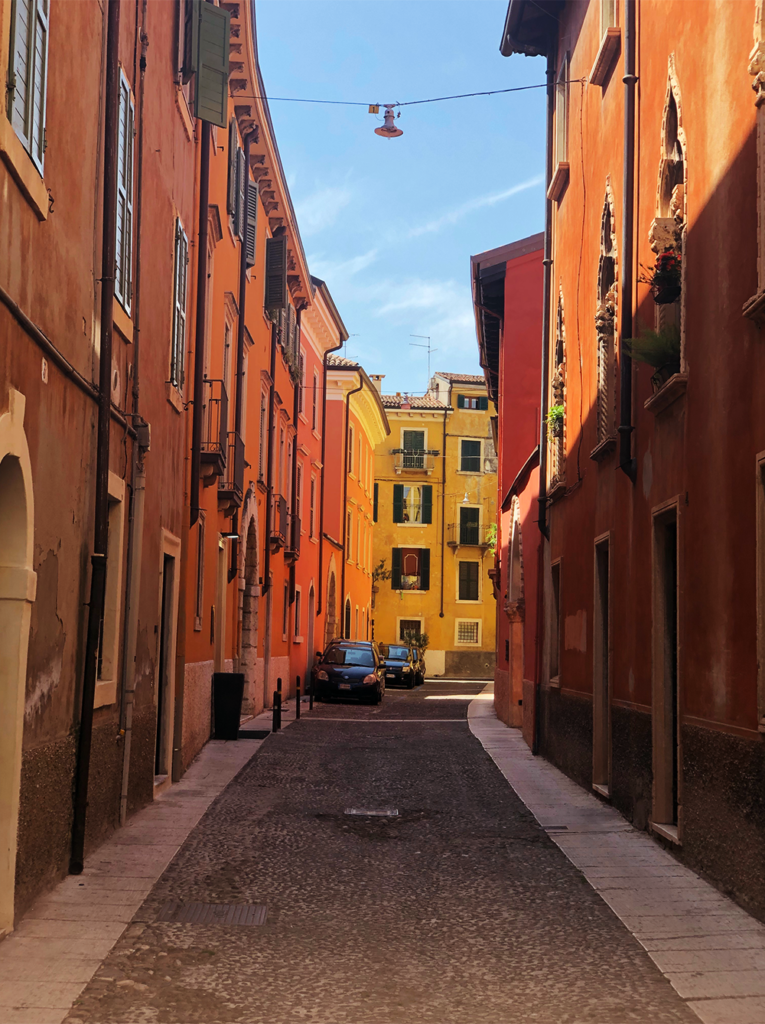
Dreamy, exquisite, refined and measured. All adjectives that undeniably apply to the Italian way.
All images provided by the author.
Images edited by Barbara Chernyavsky.
